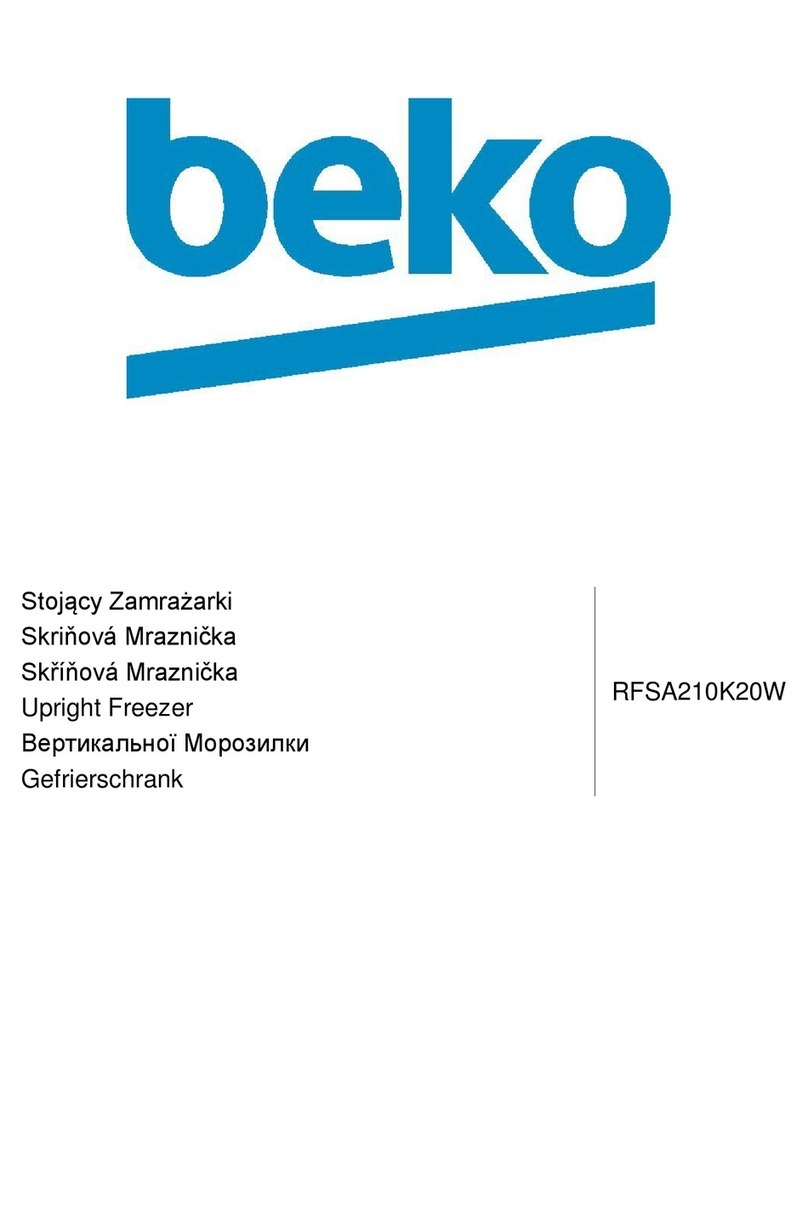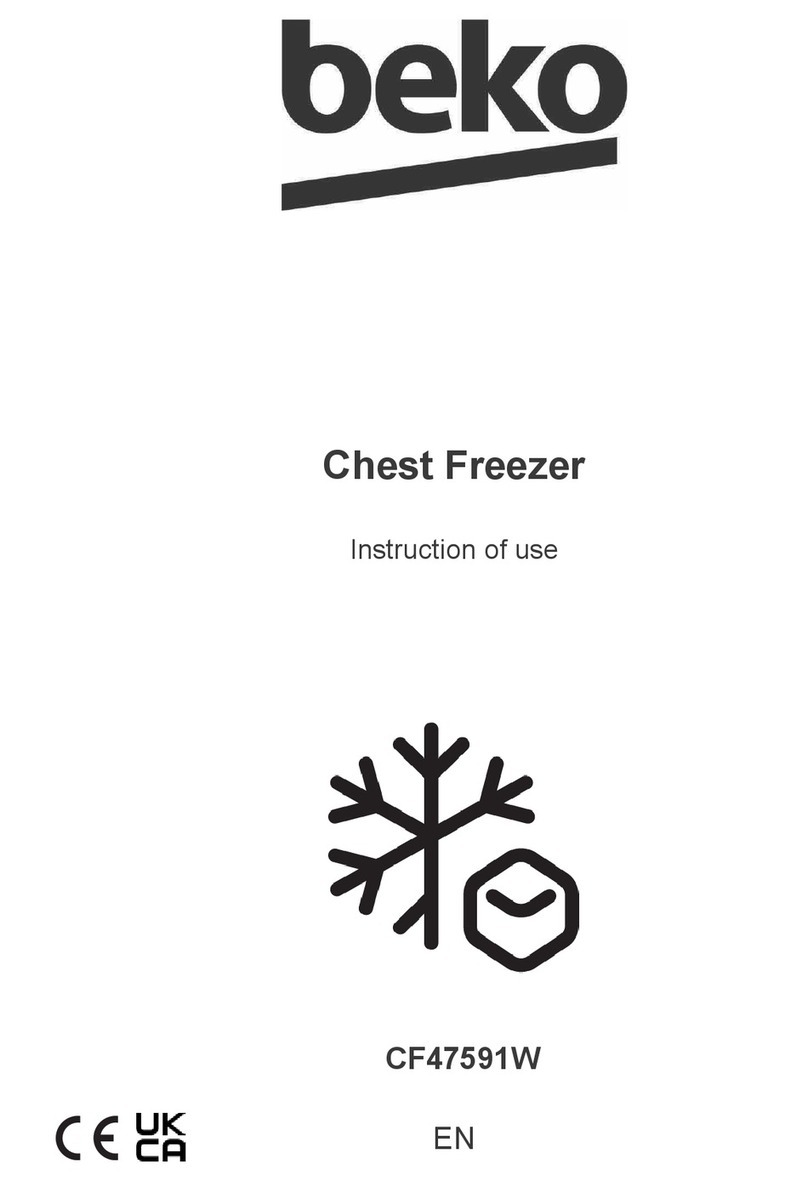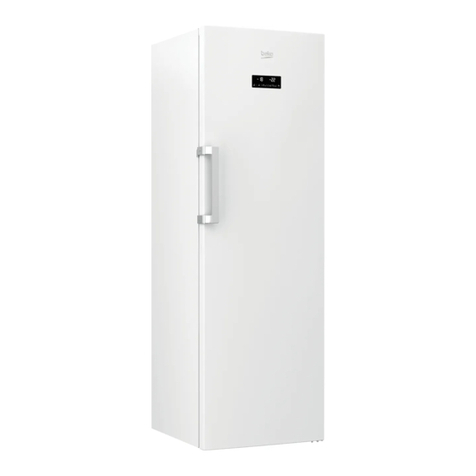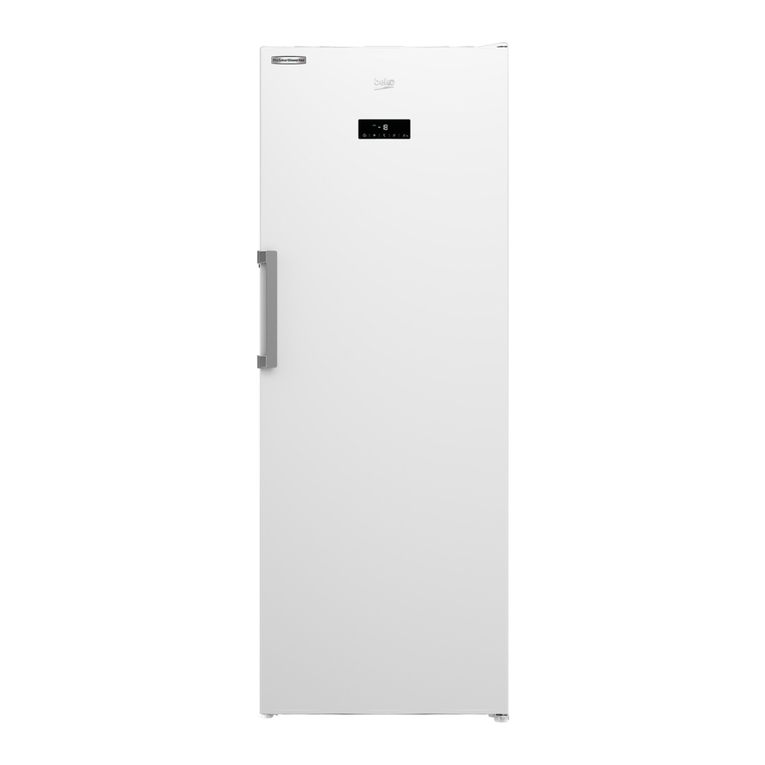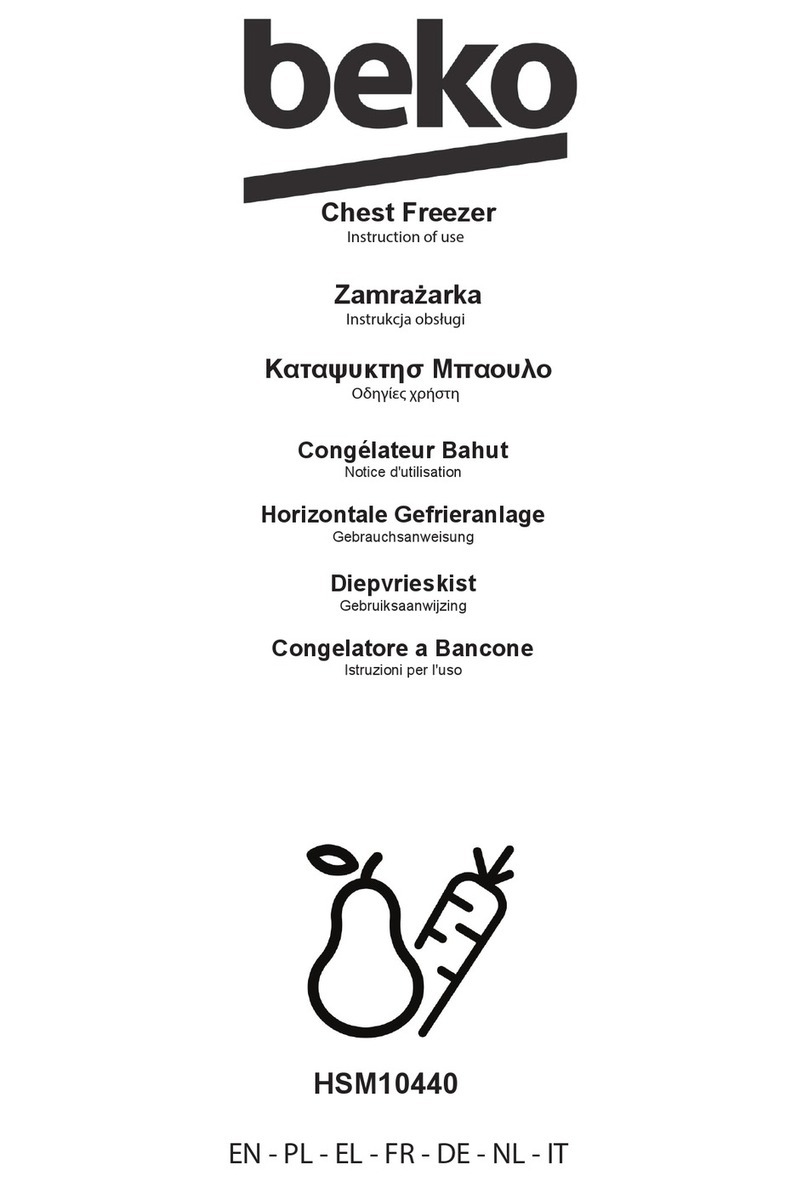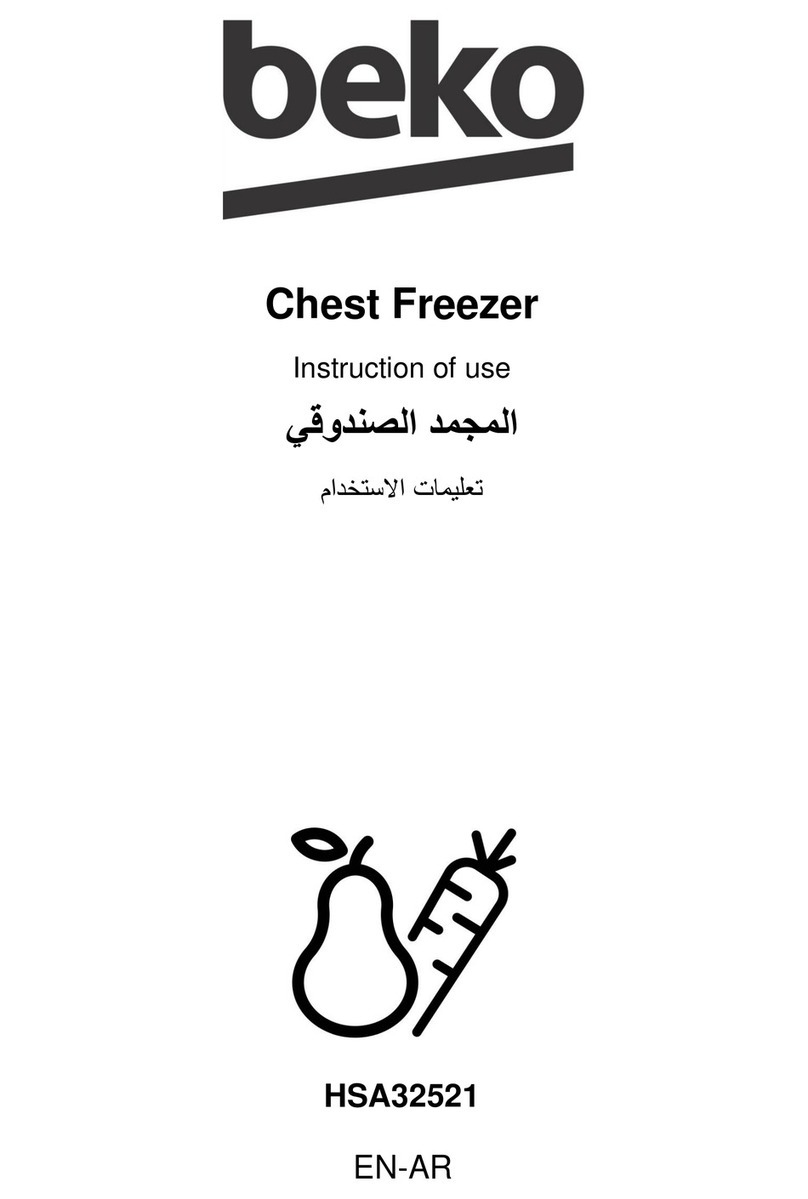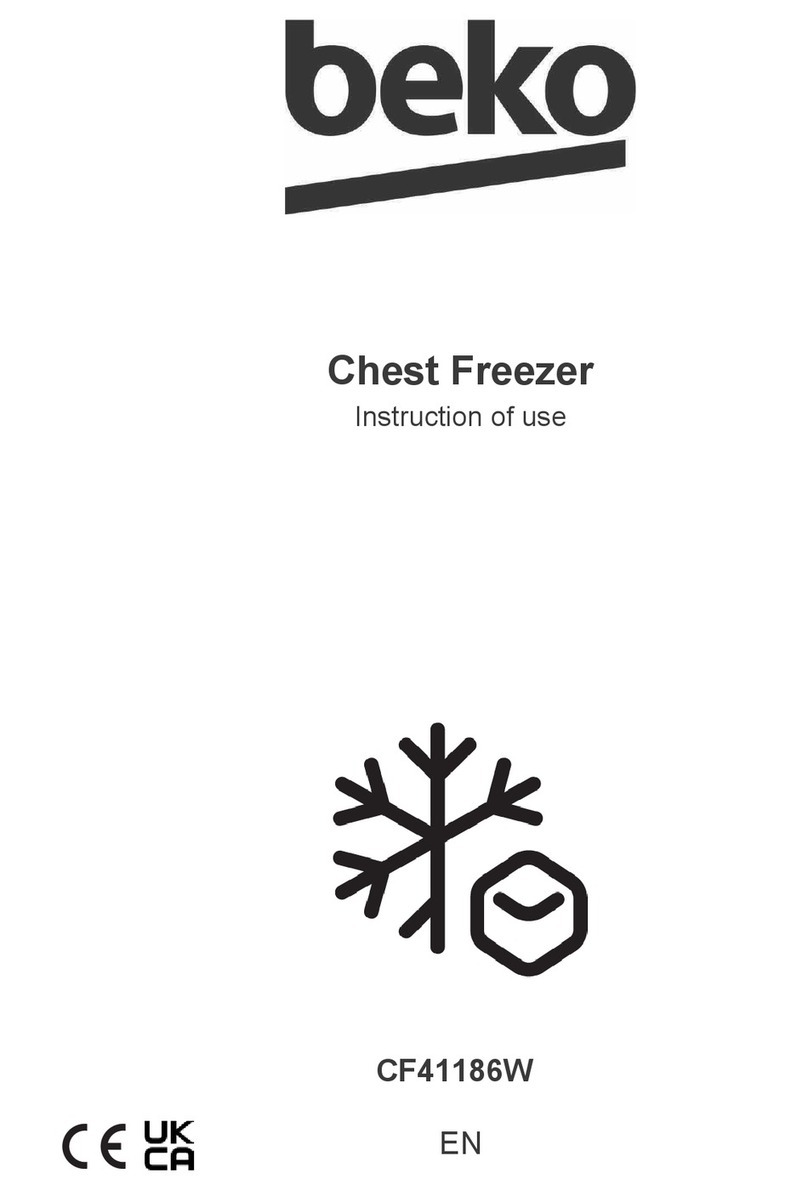Do not spray substances containing
inflammable gases such as propane
gas near the refrigerator to avoid fire
and explosion risk.
Never place containers filled with
water on top of the refrigerator; in the
event of spillages, this may cause
electric shock or fire.
Do not overload the refrigerator with
food. If overloaded, the food items
may fall down and hurt you and
damage refrigerator when you open
the door.
Never place objects on top of the
refrigerator; otherwise, these objects
may fall down when you open or
close the refrigerator's door.
As they require a precise
temperature, vaccines, heat-sensitive
medicine and scientific materials
and etc. should not be kept in the
refrigerator.
If not to be used for a long time,
refrigerator should be unplugged. A
possible problem in power cable may
cause fire.
The plug's tip should be cleaned
regularly with a dry cloth; otherwise, it
may cause fire.
Refrigerator may move if adjustable
legs are not properly secured on the
floor. Properly securing adjustable
legs on the floor can prevent the
refrigerator to move.
When carrying the refrigerator, do not
hold it from door handle. Otherwise, it
may be snapped.
When you have to place your product
next to another refrigerator or freezer,
the distance between devices should
be at least 8cm. Otherwise, adjacent
side walls may be humidified.
Child safety
If the door has a lock, the key should
be kept away from reach of children.
Children must be supervised to
prevent them from tampering with the
product.
Compliance with the WEEE
Regulation and Disposing of the
Waste Product
The symbol on the product or on
packaging indicates that this product may
not be treated as household waste.
Instead it shall be handed over to the
applicable collection point for the
recycling of electrical and electronic
equipment. By ensuring this product is
disposed of correctly, you will help
prevent potential negative consequences
for the environment and human health,
which could otherwise be caused by
inappropriate waste handling of this
product. For more detailed information
about recycling of this product, please
contact your local city office, you
household waste disposal service or the
shop where you purchased the product.






